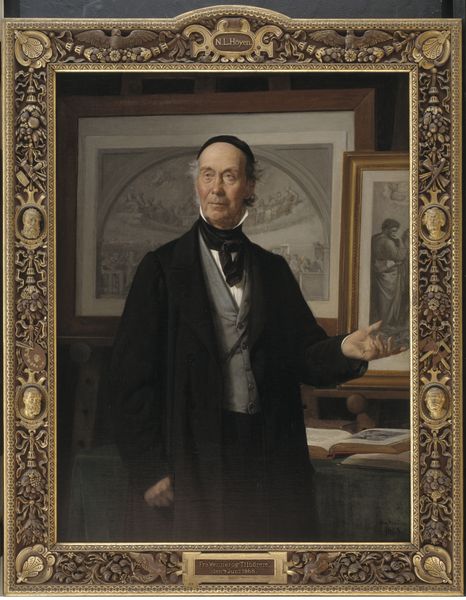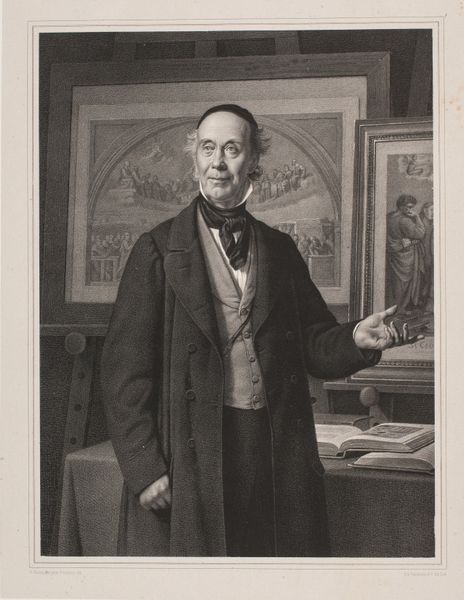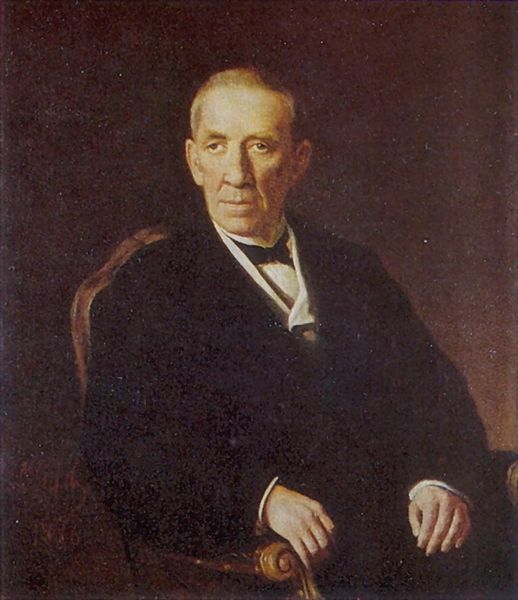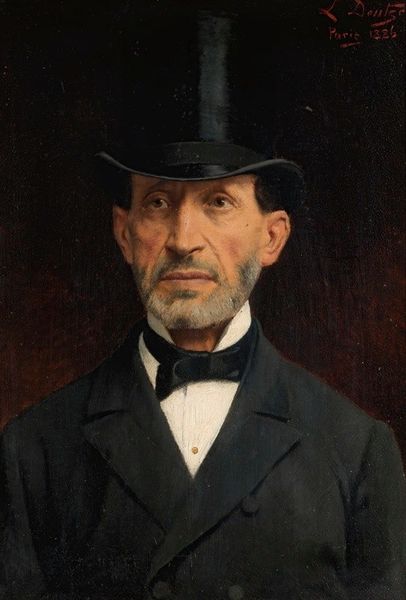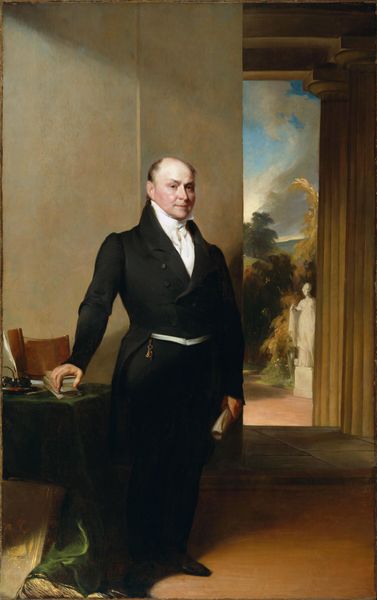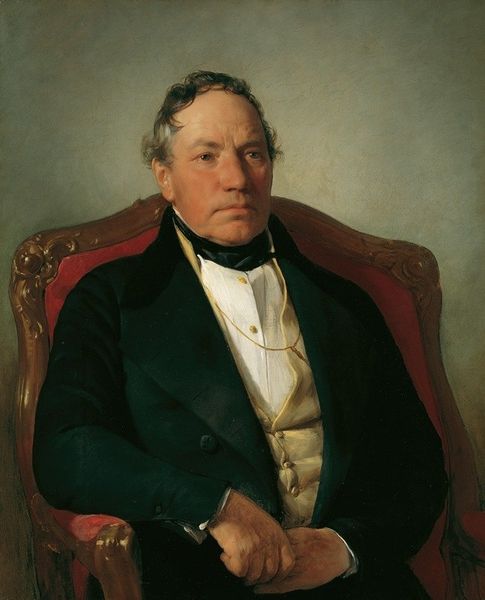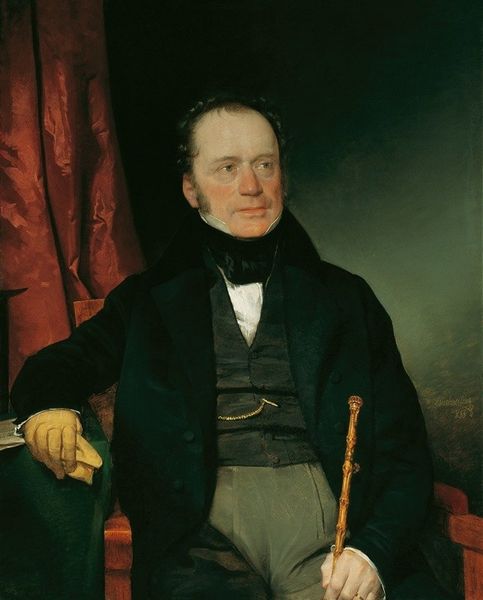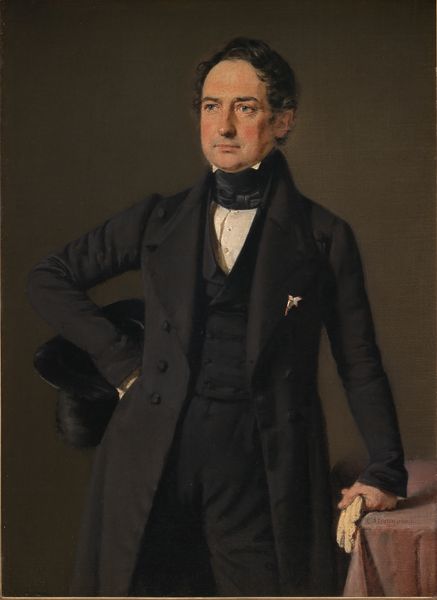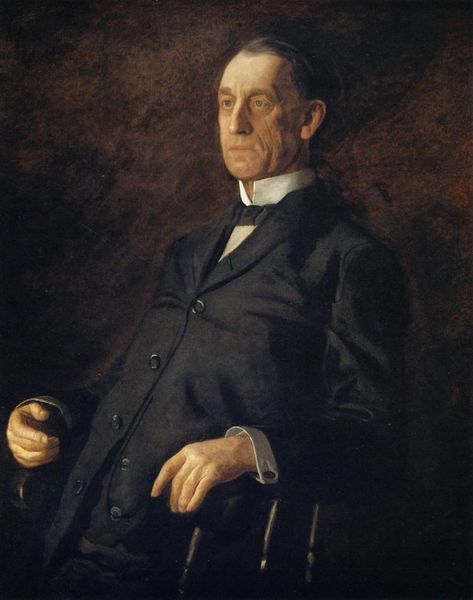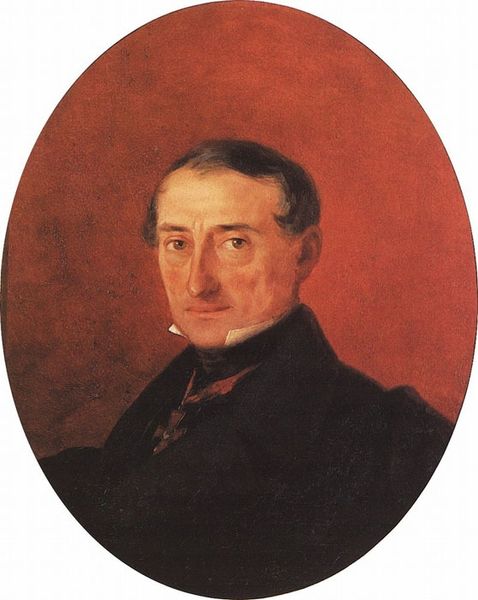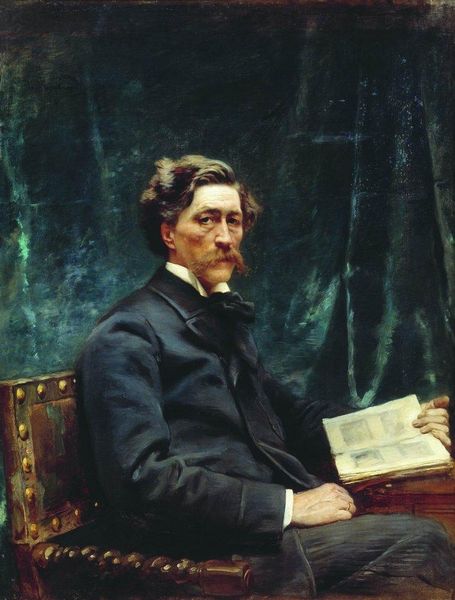
Copyright: Public Domain: Artvee
Editor: This is Wilhelm Marstrand's 1868 oil painting, "The Art Historian Niels Lauritz Høyens". It feels like such a formal, almost stately depiction. What stands out to you? Curator: For me, this portrait is compelling as a snapshot of the institutionalisation of art history itself. Consider the role Høyens played in shaping Danish national identity through art. He advocated for a distinctly Danish art, rooted in folklore and history, as a means of cultural and political assertion. How does his work reflect broader European movements towards nation-building and the use of art as a tool for social cohesion? Editor: That's interesting. I hadn't thought about it that way. So, it’s not just a portrait, it’s about nationhood? Curator: Exactly! Consider also the visual cues. The paintings behind Høyens. They point to a curated lineage, a deliberate construction of artistic tradition. How might we read his pose, his attire, in relation to the power dynamics inherent in defining artistic canons? Whose stories are being told, and whose are being excluded? Editor: I guess the portrait isn't just showing us who he is, but what he *represents.* What impact do you think he and artists such as Marstrand had on art education at the time, and does that impact still echo in any way? Curator: Their emphasis on national identity and historical narrative significantly shaped art education, although this arguably narrowed the scope and potentially marginalised other artistic voices. These echoes continue to resonate, challenging us to continually re-evaluate and expand the narratives we tell about art history. Editor: Thanks, that’s really helpful. It has broadened my perspective. Curator: Mine too. I'm now considering the contemporary critiques of nationalist art and their continued relevance.
Comments
No comments
Be the first to comment and join the conversation on the ultimate creative platform.
